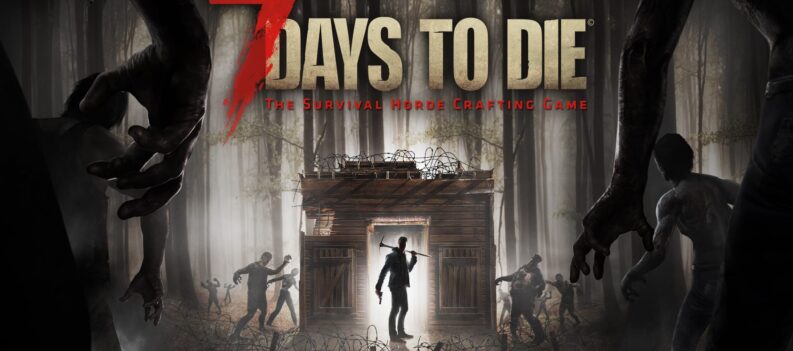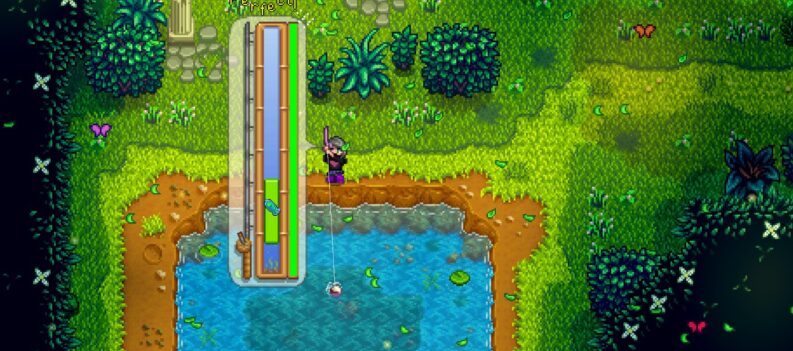I had a conversation with a friend about books last week in which she said, and I quote, ‘yeah but all the classics are s#*t’. I was a little taken aback, I mean they’re classics for a reason – they’re good. It was only then that I realised a lot of modern gamers seem to hold a similar prejudice against classic video games. Phrases like ‘they’re clunky’, ‘they look like crap’, and ‘they’re boring compared to new games’ are amongst the most common complaints hurled at them. Yet, I get the impression that a lot of modern gamers have not given many, if any, classics a go. With that in mind I’m planning to review as many classic PlayStation games as possible in order to validate or vanquish that prejudice. To do this properly means treating these reviews like any other – with a score to boot. The first classic to take its place on the chopping block will be the PS1 game Castlevania: Symphony of the Night.
Symphony of the Night is the sequel to Castlevania: Rondo of Blood and opens with the final scene from that game in which Richter Belmont puts an end to Dracula himself. Symphony takes place four years after those events when Castle Dracula reappears. The player controlled protagonist, Alucard, makes a death defying jump through the castle’s closing drawbridge and the game begins. Alucard’s mission is simple, at least in principle, as he has tasked himself with destroying his father’s accursed castle once and for all. That’s right Alucard is a dhampir – a child of both a vampire and a human – meaning he is Dracula’s son. However, he is not alone in his quest. At many intervals throughout the game Alucard comes into contact with a female character named Maria who is searching for Richter, who has gone missing in the Castle. There’s also a quirky librarian who will enthusiastically sell anything he has if your price is right.
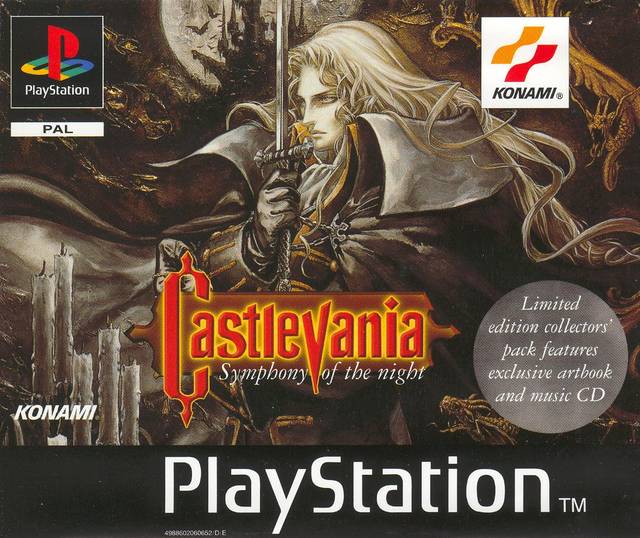
Symphony of the Night’s PS1 cover art.
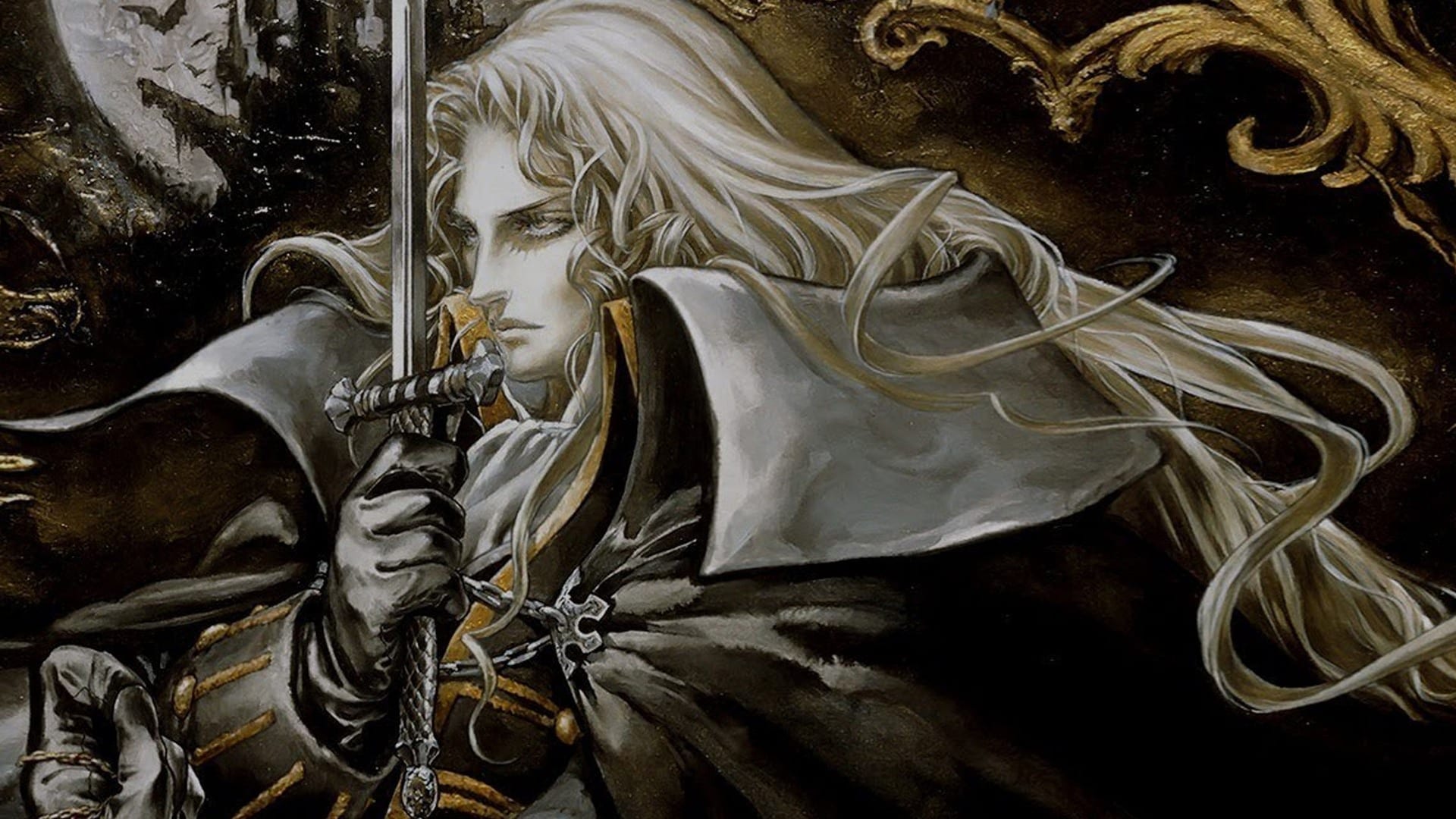
The gameplay seamlessly intertwines action-platforming, boss encounters, exploration, and some light RPG elements to make a near perfect metroidvania-style environment for the player to explore. Alucard can hold an item in either hand allowing the player to tactically string together attacks by mashing the circle and square buttons. My personal favourite loadout consisted of a dagger in his right hand (square), which allowed for a flurry of quick attacks that also had the advantage of hitting above his head, with a powerful sword in his left hand (circle), which was slower but wreaked havoc on a horizontal plane. Of course there’s shields, potions, and an abundance of throwing weapons should you desire a different playstyle. Hidden away in the depths of Castle Dracula’s library is, the aforementioned, librarian shop keeper who will allow Alucard to purchase items ranging from weapons and armour, to healing potions and spells. Hidden around the map are relics, which once found allow Alucard to use special abilities. These can be a simple as displaying an enemy’s name on the screen when in combat, to as complex as some of the vampiric powers laid down by Stoker in his novel Dracula (a fine example of a classic book).
It’s these vampiric powers that really make Symphony of the Night stand out amongst the best. When you start the game you’ll have a sword along with the ability to dodge and jump. However, before long you’ll find relics such as the Leap Stone, which allows Alucard to sprout wings and double jump, or the Form of Mist, which allows Alucard to turn into a cloud of mist for just long enough to pass through a grate. This means that when you’re struggling to beat a boss you might remember that high platform you couldn’t reach earlier. You can backtrack and use the Leap Stone to get up there at which point you may find an item to help you beat the boss. Sometimes you’ll even have to head back to a previous area with a new found ability in order to progress the game. All that backtracking could get awfully tedious after a few hours, but thankfully the developers have dotted a handful of fast travel points throughout the castle to make life that bit easier.
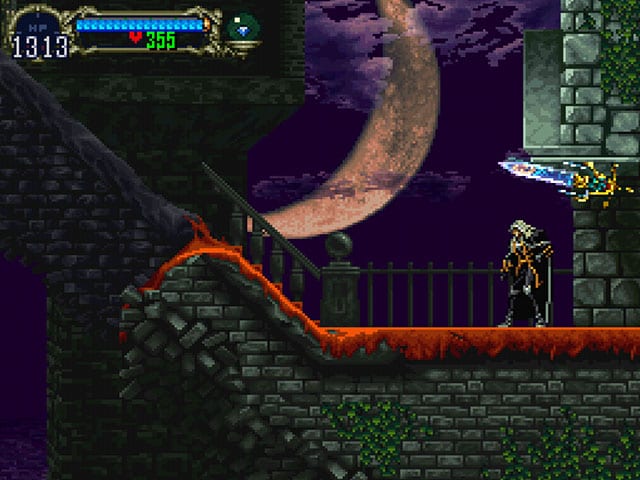
Despite it’s 2D playing-field the game manages to give the impression of depth.
Aesthetically the game still holds up. Unlike some other PS1 games Symphony of the Night opted for a simple art direction, that wasn’t too graphically demanding, back in 1997 and still reaps the benefits from that choice today. The action takes place on a 2D plane, but a background made up of multiple layers adds an impressive sense of scale and depth. As they climb the church towers players will be treated to an impressive background of approaching clouds on the outside with artfully created stained glass windows on the inside, while The Marble Gallery goes back as far as the eye can see with layer upon layer of impressive pillars. However, as I said the action takes place on a 2D plane which is adorned with flickering torches and capable adversaries. The sheer volume of enemy types puts most new games to shame. Not only are there skeletons – there’s about ten variants of them, from archers to bone throwers, then there’s knights, zombies and more than a dozen others, including the aggravating Flea Men. Although I think my biggest adversary has to be the Owl Knight who can deal massive amounts of damage to your health bar and controls a pesky owl who staggers you upon contact.
The game is quite challenging at times, but it is never unfair. Every death becomes another lesson learned and eventually you’ll be clearing out entire areas in Dracula’s castle depending on muscle memory alone. On one occasion I aggressively charged through a pathway connecting two church towers only to be firmly put in my place by a pike wielding skeleton. Upon death I reloaded and headed back there to face them again, little did they know that killing me was the biggest mistake they would ever make as doing so telegraphed their moves giving me the power to fight back. This time I charged in and hit the square button stabbing the closest one with my dagger. I then double tapped triangle to dodge out of his pike’s long range before sweeping forward and smashing the circle button, finishing him with a slow definitive blow from my sword. The same goes for nearly every enemy in the game, as they deal damage you learn how to read their every move and soon enough you’ll be annihilating them with prowess at every turn.
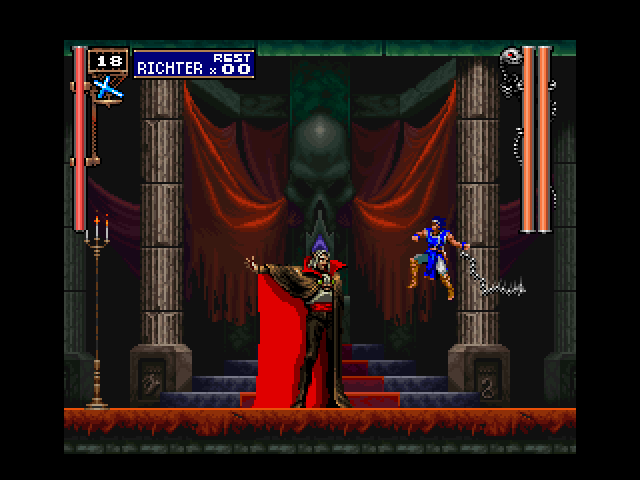
The opening fight with Richter and Dracula.
Combat and movement are complimented by a series of grade-A animations. Alucard struts around Castle Dracula like a man who truly means business. As he crouches or jumps his long hair (which wouldn’t look out of place in a hair metal band) flows behind him. Each weapon type comes with its own animation, such as the sword’s horizontal swoop or the dagger’s overarching stab. The enemies also come with their own set of unique animations. The skeletons skulk around as if suffering from a bad case of scoliosis, while the baleful knights proudly stalk the castle’s corridors waiting for any who dare to challenge them. In the background clouds move ominously towards the player, while candles flicker on the walls. Best of all, however, are the death animations. Enemies explode in a burst of fire as they let out agonising screams that would chill the blood of lesser men than Alucard. Speaking of agonising screams the gameplay is complimented by a wide variety of high quality sounds, from the grunts triggered by getting hit and sound of weapons, to voice acting that fits the game’s atmosphere perfectly. That atmosphere wouldn’t come together so nicely without the preeminent soundtrack. When you enter some areas you’re greeted with an anthem of aggressive electric guitar riffs and fast heavy drum beats, while other places are associated with a grand, and sometimes poignant, orchestral scores. Of course the church sections wouldn’t be complete without some heavenly hymns that even your staunch Catholic granny would approve of.
It’s as clear as day that Symphony of the Night has been a huge inspiration for so many games that followed. Take 2011’s Dark Souls for example. Everything from the learn by mistake combat, specific save points, challenging bosses, the interconnected map, traps, the unique scores for different areas, RPG elements, shortcuts, and pretty much everything else found in the game can be found in this 1997 classic. To top off the fact that the game influenced many popular modern games it still manages to hold its own up there with them. The controls are smooth, it has a stellar soundtrack, the graphics are solid, but above all it remains challenging and fun. If you’ve recently beaten Dark Souls 3 and find that you are hungry for more perhaps you should consider looking back towards Castlevania: Symphony of the Night instead of holding out for another similar game in the future.
-
Overall - 9/109/10
Summary
Castlevaina: Symphony of the Night is proof that classics are considered classics for a reason. That reason being, they excelled in their day and continue to excel today – in other words they’re good. The gameplay is smooth, the art direction is outstanding, and the soundtrack has a wide range beginning with soft melodies and ending with heavy rock paeans. The game is fair yet has no sympathy for those not willing to take on a real challenge, which ultimately ends up being one of the most rewarding experiences a modern gamer could look for. Symphony of the Night not only has the ability to vanquish any prejudice a modern gamer may have, it will completely obliterate any such thoughts.


